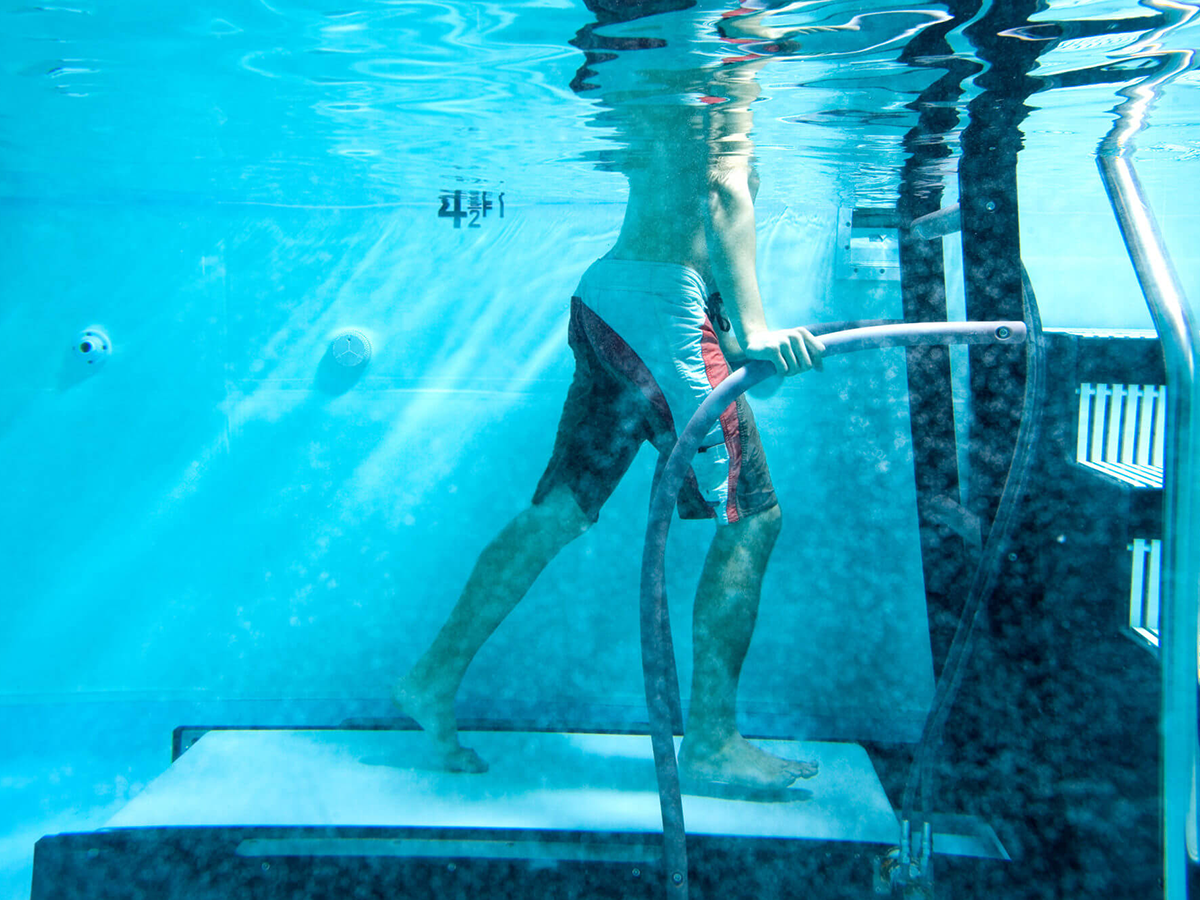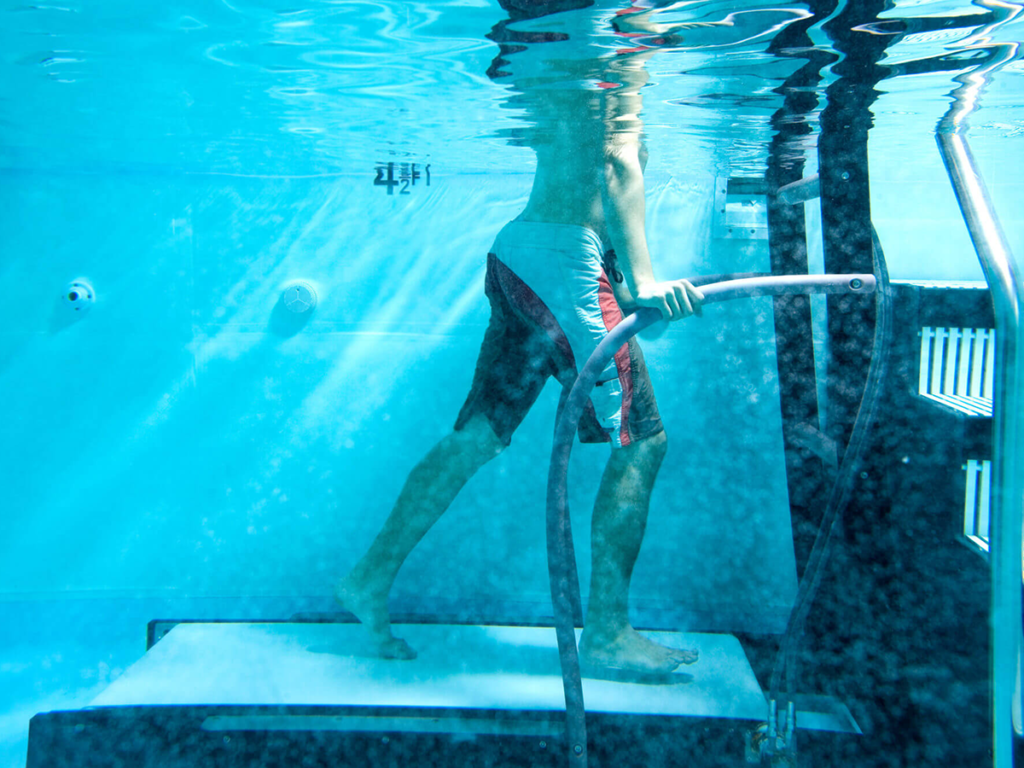

3.4 million Australians are currently living with chronic pain. Having this persistent pain can feel frustrating, disheartening, stressful and restrictive, with those experiencing it being five times more likely to be “limited a lot” in their daily activities, making it difficult for them to work and continue being involved in the activities they enjoy.
While chronic pain is often temporarily controlled with analgesics and other pain-blocking medications, these may have potent adverse effects if used over a long period. There is also a lack of evidence for their long-term effectiveness, and they carry with them the risk of misuse and dependence, which is currently a national health concern.
Hydrotherapy is one of the pain management tools and services that our physiotherapists use with great success to help patients with chronic pain decrease their pain levels without medications, while improving their movement, flexibility and satisfaction. Today, we’ve shared all about hydrotherapy for chronic pain to give you an insight into whether it could be right for you, too.
What Is Hydrotherapy?
Hydrotherapy leverages the numerous benefits of heated water in a pool to assist physiotherapy rehabilitation, exercise – and even mindset. These one-on-one in-pool sessions work in a number of ways:
1. Hydrotherapy provides buoyancy to lower the impact of exercise
The deeper you go into the water, the less you weigh, meaning that hydrotherapy enables those that may otherwise struggle to complete the exercises they need for their rehabilitation, health and wellbeing to exercise with greater ease.
Studies have shown that when you’re at your waist depth in the water, approximately at your navel, you’re only having to carry 50-55% of your body weight. Standing chest-depth, at your nipple line, leaves you at up to 25% of your bodyweight, and at your neck-depth, you’re left taking on as little as between 6-9%, depending on whether you’re inhaling or exhaling.
This means that the impact of your movement (including rehab and exercise) is lowered significantly, making hydrotherapy a fantastic solution for someone who struggles to handle the stress on their joints from everyday movement and exercise.
2. Hydrotherapy removes the fear of falling by adding stability
With nearly one in three older Australians having a fall in the past 12 months alone, the fear of falling along with stability and strength issues form a significant barrier to exercise and rehabilitation from pain and injuries. Hydrotherapy helps to remove this fear by providing support for the body through the water, removing the mental fear for those afraid of fractures as a result of falling. For added reassurance, you have your physio there with you for one-on-one attention and care for if you do lose your footing.
3. Hydrotherapy improves circulation while helping you relax and feel comfortable
The warm temperature of the water helps promote blood vessel dilation, thereby promoting circulation, while helping optimise muscle relaxation. The warmth also helps ease pain and improve your comfort.
4. Hydrotherapy reduces swelling and promotes venous return
Water places natural hydrostatic pressure on your body (or any object) when you’re in it. This pressure subjects the body to a compressive force similar to the effect of wearing compression stockings – helping to reduce swelling and improve circulation, venous return and lymphatic drainage.
5. Hydrotherapy helps safely build or maintain strength
When you move in the water, the water creates some natural resistance from the drag forces without overdoing it and overloading the body. Combined with the safe movements prescribed by your physio, this offers a safe and comfortable way to build and maintain strength, countering the effects of muscle loss and weakness from being unable to exercise and use your body when you’re suffering from pain or injury.
6. Hydrotherapy may have a calming effect, too
Studies looking at the effects of hydrotherapy on hormone levels in the body have shown that they reduce the levels of stress-related hormones, which may “contribute to a reduction of stress, improvement of sleep quality, and reduction of pain sensitivity”.
Which pains and problems can hydrotherapy help with?
Hydrotherapy has been shown to help patients suffering with chronic pain as a result of osteoarthritis, fibromyalgia, low back pain, complex regional pain syndrome, and a range of long standing muscle and joint problems where a barrier to effective recovery is difficulty with movement, exercise and regaining muscle strength.
Hydrotherapy is also widely used to help manage neurological conditions, enhance cardiovascular endurance, and assist recovery after surgery.
Hydrotherapy With Allsports Physiotherapy
Our physio team at Allsports use hydrotherapy extensively to help our patients get the best outcomes for their health and wellbeing – especially where they didn’t think it would be possible given their level of pain or mobility restrictions. Hydrotherapy enables patients to feel confident and in control of their movement and their bodies, something they may struggle with otherwise. Our physios will guide you gently into the water and may use flotation devices to help you get the most out of your time in the water. Our goal is to help you stay comfortable while helping you get the best results to help in your everyday life.
Book in with your local Allsports physio online here or call the clinic near you here.
References
- https://www.painaustralia.org.au/
- https://www.aihw.gov.au/getmedia/10434b6f-2147-46ab-b654-a90f05592d35/aihw-phe-267.pdf.aspx
- https://www.aihw.gov.au/getmedia/10434b6f-2147-46ab-b654-a90f05592d35/aihw-phe-267.pdf.aspx
- https://www.ncbi.nlm.nih.gov/pmc/articles/PMC4654409/
- https://www.healthdirect.gov.au/falls
- https://www.ncbi.nlm.nih.gov/pmc/articles/PMC6613198/
